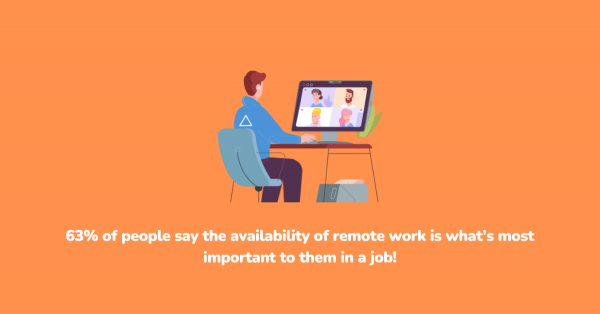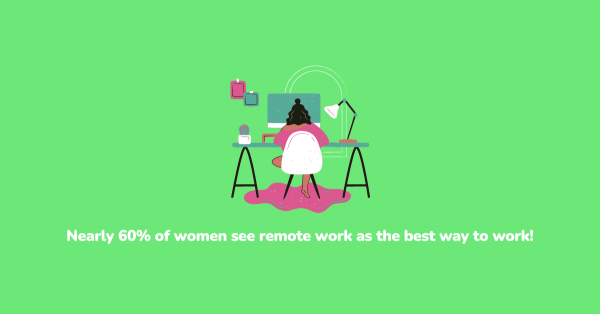The modern workplace is undergoing a significant transformation. The concept of a traditional 9-to-5 workday in a physical office is no longer the only option for many employees. Today's workforce thrives on flexible workplaces, a broad term encompassing various flexible work arrangements.
What is Flex Work?
Flex work encompasses a variety of alternative work schedules and locations that deviate from the standard office setup. This can include:
- Remote work - Employees perform their duties from a location outside of a traditional office environment.
- Flex hours - Employees have some flexibility in choosing their work hours as long as they meet their required work time.
- Compressed workweeks - Employees complete their standard workweek in fewer days by working longer hours each day.
These flexible arrangements offer a win-win situation for both employers and employees. Businesses can access a wider talent pool and potentially boost productivity, while employees can achieve a better work-life balance and enjoy greater well-being.
What is Recruitment?
What is recruitment? Recruitment is the essential process of identifying, attracting, and selecting qualified candidates to fill open positions within an organization. It encompasses the entire hiring process, from advertising the job opening to onboarding the chosen candidate.
Traditionally, talent acquisition has often relied on attracting candidates to a physical workplace. However, the rise of flexible schedules necessitates a shift in hiring strategies. Applicant Tracking Systems (ATS), which streamline the application and screening process, also need to adapt to accommodate the growing demand for flexible arrangements.
Challenges of Recruiting for Flex Work
While flexible hours offer numerous benefits, adapting your hiring process to accommodate these arrangements comes with its own set of challenges. Here's a closer look at some of the key hurdles recruiters might face:
Limitations of Traditional ATS Systems
Applicant Tracking Systems (ATS) has become a cornerstone of modern talent acquisition. They help automate tasks, streamline candidate screening, and improve overall hiring efficiency. However, many traditional ATS systems weren't designed with the specific needs of flex work in mind. This can lead to several limitations:
- Keyword Targeting Challenges - ATS systems rely heavily on keyword matching to filter and rank candidates. Traditional job descriptions often focus on location-based keywords (e.g., "must be located in [city]") which could unintentionally exclude highly qualified remote talent.
- Screening for Skills vs. Location - Many ATS features are optimized for evaluating a candidate's physical presence or proximity to the workplace. This can make it difficult to assess skills, experience, and cultural fit for roles that can be performed remotely.
- Lack of Remote Interview Functionality - Traditional ATS systems might not have built-in features for conducting video interviews, a crucial component of evaluating remote candidates.
Assessing Skills and Cultural Fit in a Virtual Environment
Evaluating a candidate's fit for company culture and role traditionally involves in-person interactions and observations. However, with flexible arrangements, especially remote positions, these traditional methods become less applicable. This can make it challenging for recruiters to assess:
- Communication and Soft Skills - In-person interviews allow for a more nuanced evaluation of a candidate's communication style, body language, and overall fit within the team dynamic. Virtual interviews can present obstacles in accurately assessing these soft skills.
- Work Ethic and Time Management - Traditionally, working from an office environment allows for some level of observation of a candidate's work ethic and time management skills. Remote work requires a greater emphasis on defining clear performance metrics and establishing effective communication channels to ensure accountability and productivity.
- Cultural Fit - Company culture is often experienced and evaluated through in-person interactions and immersion in the office environment. For remote positions, creating opportunities to assess cultural fit can be more challenging.
Internal Resistance to Flex Work
While the concept of flexible schedules is gaining traction, some companies and hiring managers might still harbor resistance to these arrangements. This resistance could stem from concerns about:
- Reduced Productivity - A misconception that remote employees are less productive than their in-office counterparts persists in some organizations.
- Communication and Collaboration Challenges - Concerns about maintaining clear communication channels and fostering collaboration within a team with remote members can be a hurdle.
- Management Challenges - Supervising and managing remote employees requires a different approach compared to in-office teams. Companies that haven't established clear remote work policies and management practices might be hesitant to embrace flex arrangements.
These internal roadblocks can make it difficult to implement a flex-friendly talent acquisition strategy and attract top talent who value work-life balance and flexible work options.
Attracting Candidates Who Thrive in a Flex Environment
While flexible work is becoming increasingly popular, it's not necessarily a perfect fit for everyone. Recruiters face the challenge of attracting candidates who not only possess the required skills and experience but also thrive in a flex environment.
- Self-Motivation and Time Management - Flex arrangements require a high degree of self-motivation, time management skills, and the ability to stay focused and productive in a non-traditional work setting.
- Effective Communication and Collaboration - Successful remote work necessitates strong communication skills and the ability to collaborate effectively with colleagues despite geographical distance.
- Adaptability and Tech-Savvy - Flex hours often require a high level of adaptability and comfort with using technology for communication, project management, and task completion.
Adapting Your Recruitment Process for Flexible Work Hours

The challenges associated with recruiting for flexible hours shouldn't deter companies from embracing this growing trend. By adapting your hiring process, you can overcome these hurdles and attract top talent who thrive in flexible work arrangements. Here's a look at key strategies to optimize your talent acquisition for a flex environment:
Revise Job Descriptions for a Flex-Friendly Audience
Clear Communication of Flex Options - The first step is to clearly state the flex options you offer in the job description. This could include:
- Whether the position is fully remote, offers flexible work hours, or allows for compressed workweeks.
- Specify any core working hours required, if applicable.
- Highlight the company's commitment to work-life balance and supporting a flexible work environment.
Keywords for Flex Hours - Use relevant keywords throughout the job description to target candidates seeking flexible hours. Some examples include "remote work," "flexible hours," "work-life balance," and "compressed workweek."
Benefits of Flexible Hours for Candidates - Don't just list the job duties; showcase the benefits of working at your company with a flex arrangement. This could include improved work-life balance, time savings from commuting and increased productivity in a distraction-free environment.
Modernize Your ATS for a Flex Future
Your Applicant Tracking System (ATS) should be your ally in recruiting for flex positions. Here's how to modernize your ATS for a flex-friendly approach:
Remote-Friendly Features - Consider integrating features within your ATS that cater to remote acquisition, such as:
- Video Interviewing - Many ATS platforms now offer built-in video interviewing functionality, allowing you to efficiently evaluate remote candidates face-to-face.
- Skills Assessments - Utilize skills assessments within your ATS to objectively evaluate a candidate's abilities and knowledge irrespective of location.
- Remote Onboarding Tools - Explore integrating tools for onboarding and managing remote employees directly within your ATS.
Focus on Assessing Skills and Cultural Fit
The traditional focus on location during the acquisition process needs to shift to a skills-based approach for flex positions. Here's how to adapt your evaluation methods:
- Skills-Based Interview Questions - Design interview questions that delve into a candidate's specific skills, experience, and problem-solving abilities relevant to the role.
- Behavioral Interviewing - Utilize behavioral interview questions that focus on past experiences and how the candidate approached challenges. This can reveal valuable insights into a candidate's work ethic, time management skills, and ability to deliver results.
- Project-Based Assessments - Consider incorporating project-based assessments that allow candidates to showcase their skills and problem-solving abilities in a simulated work environment.
- Virtual Take-Home Assignments - Take-home assignments can be an effective way to assess a candidate's technical skills and work style in a remote setting.
Evaluating cultural fit can be more challenging for remote positions. Here are some strategies:
- Company Culture Videos and Information - Create informative videos and content that showcase your company culture and values on your careers page.
- Virtual Team Introductions - Consider incorporating virtual introductions with team members during the interview process to allow candidates to get a feel for the team dynamic.
- Behavioral Interview Questions for Cultural Fit - Design interview questions that explore a candidate's values, work style, and approach to collaboration to assess potential cultural fit.
Promote Your Flexible Culture as a Competitive Advantage
In today's job market, many talented individuals prioritize work-life balance and flexibility. Here's how to showcase your flex culture and attract top talent:
Careers Page and Employer Branding
- Emphasize the benefits of flexible hours for employees, such as improved well-being, increased productivity, and a better work-life balance.
- Include testimonials from current employees who thrive in your flex environment.
- Utilize visuals like photos and videos that depict your company culture and the flexibility it offers.
Social Media Recruitment
Promote your open positions and flexible culture on social media platforms like LinkedIn and Indeed.
- Utilize relevant hashtags like #remotework, #flexjobs, and #worklifebalance to target candidates seeking these arrangements.
- Share employee stories and experiences working remotely at your company.
Employer Branding Events
Participate in virtual career fairs and online job boards that cater to remote work opportunities.
- Highlight your company's commitment to flexible hours during these events.
Partner with Remote-Work Focused Platforms
Consider partnering with online platforms and job boards that specialize in remote work opportunities. These platforms allow you to reach a wider pool of qualified candidates seeking flexible arrangements.
Build a Talent Pipeline
Don't wait for a position to open to start building a talent pipeline for your flex needs.
- Maintain a Candidate Relationship Management System - Utilize a system to track and nurture relationships with talented candidates interested in flex opportunities at your company.
- Engage with Freelance Marketplaces - Explore freelance platforms to identify and connect with skilled professionals for potential project-based work or future full-time remote positions.
- Attend Remote Work Conferences and Events - Participating in online or in-person conferences and events focused on remote work can be a valuable way to connect with potential candidates and learn best practices for remote talent acquisition.
Benefits of a Flex-Friendly Recruitment Process

Adapting your process to accommodate flexible arrangements isn't just about catering to a growing trend; it offers a multitude of benefits for both your company and your potential employees. Here's a closer look at the key advantages of implementing a flex-friendly acquisition strategy:
Attract a Wider Talent Pool and Top Candidates
Offering flexible arrangements can give you a significant edge when attracting top talent. Here's how:
- Access to Remote Talent - By eliminating geographical limitations, you can tap into a much broader pool of qualified candidates, including those who might not be located near your physical office. This allows you to find the best person for the job, regardless of their location.
- Target Candidates Who Value Flexibility - Many skilled professionals prioritize work-life balance and the flexibility that flexible arrangements offer. A flex-friendly acquisition process demonstrates your commitment to these values, making your company more attractive to this sought-after talent pool.
- Attract Diverse Talent - Flex schedules can be particularly appealing to individuals with diverse backgrounds and circumstances, such as parents with childcare needs, individuals with disabilities, or those residing in remote locations. This allows you to build a more diverse and inclusive workforce, which can lead to increased creativity, innovation, and problem-solving abilities.
Improve Employee Retention and Satisfaction
Employees who value work-life balance and flexibility are more likely to be satisfied with their jobs and stay with the company for a longer period. Here's how a flex-friendly approach can contribute to employee retention:
- Reduced Turnover Costs - High employee turnover can be a significant financial burden for companies. By offering flex schedules, you can help create a work environment that encourages employees to stay, reducing the costs associated with recruiting and onboarding new hires.
- Increased Employee Engagement and Productivity - Studies have shown that employees who have more control over their work schedules tend to be more engaged and productive. Offering flexible options empowers employees to manage their time effectively and work when they are most focused and productive.
- Improved Employee Well-being - Flexible arrangements can significantly improve employees' work-life balance, leading to reduced stress, better overall health, and increased job satisfaction. Happy and healthy employees are more likely to be engaged and productive at work.
Enhance Your Employer Brand and Reputation
Talented individuals often research a company's culture and values before applying for a position. A commitment to flexible hours can significantly enhance your employer brand and reputation. Here's how:
- Position Yourself as a Progressive and Adaptable Company - By embracing flex schedules, you demonstrate that your company is forward-thinking, adaptable, and willing to cater to the needs of your workforce. This can make you a more attractive employer to potential candidates, especially those who value innovation and a modern work environment.
- Attract Talent Who Align with Your Company Culture - Offering flex can be a way to attract candidates who value a work-life balance and a flexible work environment. This can help you build a company culture that resonates with these values and attracts individuals who are a good fit for your organization.
- Positive Word-of-mouth Marketing - Employees who enjoy a flex-work environment at your company are more likely to recommend your organization to others. This positive word-of-mouth marketing can significantly enhance your employer brand and attract new talent organically.
Increased Innovation and Problem-Solving
A diverse and flexible workforce can lead to increased creativity, innovation, and problem-solving abilities within your organization. Here's how a flex-friendly approach can contribute to these benefits:
- Access to Diverse Perspectives - A broader talent pool often leads to a more diverse workforce in terms of background, experiences, and work styles. This diversity of thought can lead to more creative solutions, innovative approaches, and a wider range of perspectives when tackling challenges.
- Improved Collaboration - Even with flex schedules, collaboration remains crucial for success. However, a flex-friendly environment can foster a culture of collaboration that extends beyond the physical office space. Employees who are comfortable working virtually are often adept at using technology and communication tools to collaborate effectively despite geographical distance.
- Empowering Employees and Ownership - Flex schedules often empower employees with greater autonomy and ownership over their work. This sense of ownership can lead to increased motivation, creativity, and a willingness to go the extra mile to solve problems and achieve goals.
Potential Cost Savings
While there might be initial investments in technology and remote work infrastructure, flex work arrangements can lead to cost savings for companies in the long run. Here's how:
- Reduced Office Space Costs - With a portion of your workforce working remotely, you might require less physical office space. This can lead to significant cost savings on rent, utilities, and office maintenance.
- Lower Recruitment Costs - A wider talent pool often translates to a larger pool of qualified candidates, potentially reducing recruitment costs associated with advertising and candidate screening.
- Increased Employee Productivity - Studies have shown that employees who have more control over their work schedules tend to be more productive. This increased productivity can lead to cost savings for the company.
Why OrangeHRM?
Optimizing your recruitment process for a flexible work environment requires the right tools and resources. OrangeHRM offers a comprehensive Human Resource Management System (HRMS) with a modern ATS that can empower your organization to excel in remote recruitment.
With OrangeHRM, you can build a talent pipeline, attract top candidates seeking flex work opportunities, and manage your recruitment process effectively, regardless of location. Explore OrangeHRM's solutions and discover how they can help you navigate the exciting world of remote hiring. Book your FREE demo today!
